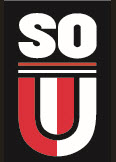
What is modernity? How and when did the world become modern (or are we)? What came before modernity, and how did people around the world experience the transformations that made our modern world? Taking as a rough frame the past five centuries, this course seeks to answer these questions on a global scale. Beginning with the so-called “Age of Discoveries,” we explore moments of cultural encounter, the rise and fall of early modern empires, the growth of European colonialism, the birth nation-states, the construction of national identities, the new phenomenon of global war, and technological revolutions over time. A secondary focus of this class hinges on a related question: How, when, and why did Europe (and eventually the United States) come to dominate in the global economy and global politics? While this course examines historical forces at the largest of scales, we will often zoom in to examine case studies around the world. We will investigate economic, cultural, political, and social aspects of historical change over five centuries in order to make better sense of our present.
- Teacher: Hannah Archambault
